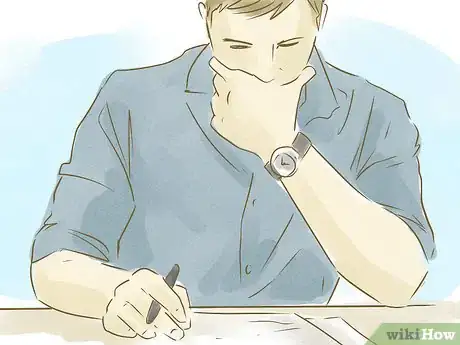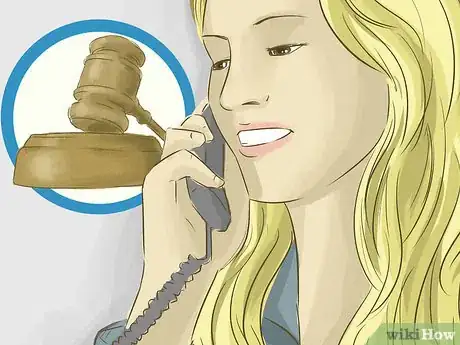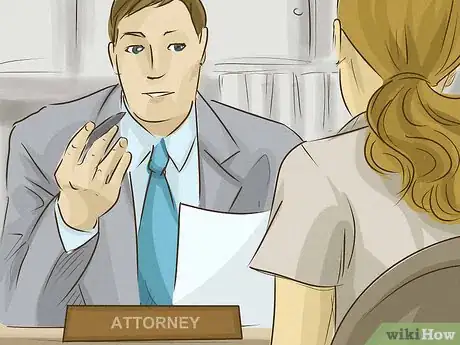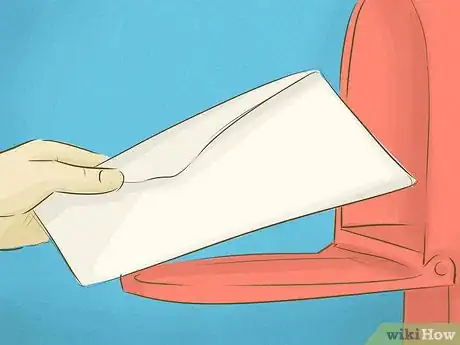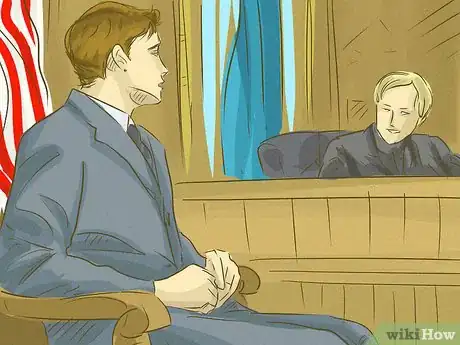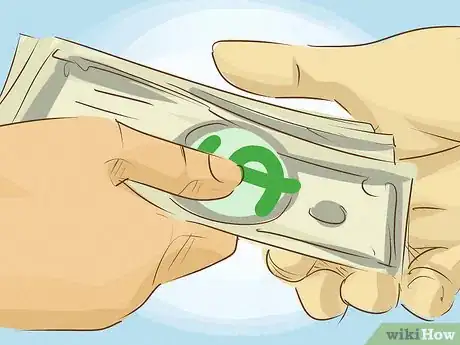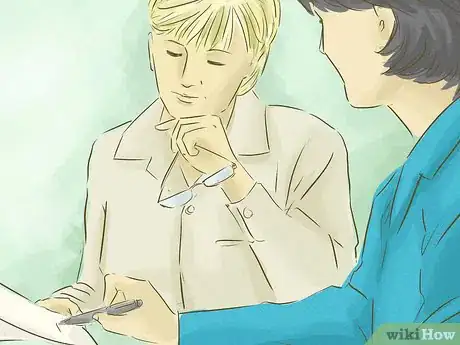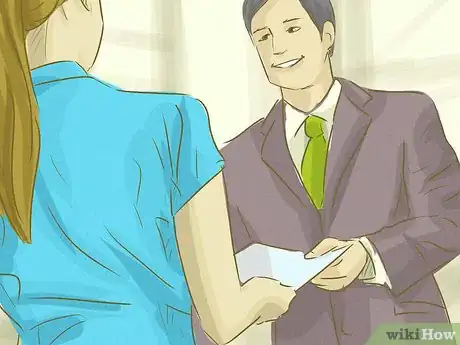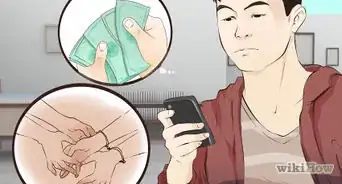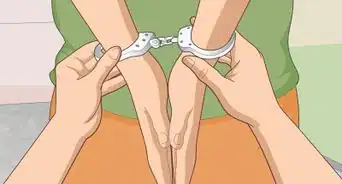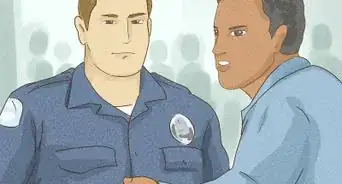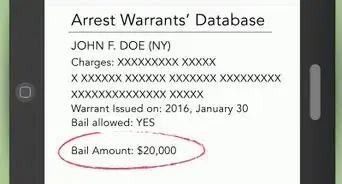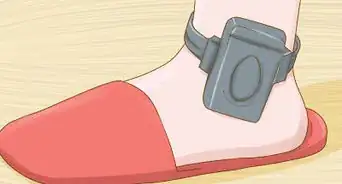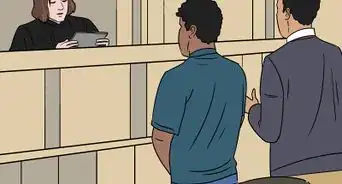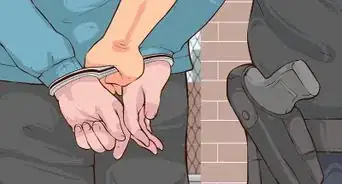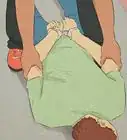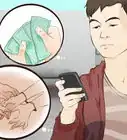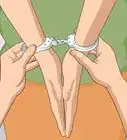This article was co-authored by Clinton M. Sandvick, JD, PhD. Clinton M. Sandvick worked as a civil litigator in California for over 7 years. He received his JD from the University of Wisconsin-Madison in 1998 and his PhD in American History from the University of Oregon in 2013.
There are 8 references cited in this article, which can be found at the bottom of the page.
This article has been viewed 54,615 times.
Arrest warrants can be issued for a variety of reasons. These may include failure to pay a fine or post bail, failure to appear for a court-ordered hearing, or failure to comply with some requirements of probation or parole. An arrest warrant could also be issued against you by mistake. In any case, you must take some action to have the warrant withdrawn. The legal terminology for withdrawing a warrant is having it “quashed.” You will either need to prove to the court that the warrant was improperly issued or that you have satisfied any obligations and there is no longer a need for it. As with any legal matter, consulting with an attorney is likely to be in your best interest.
Steps
Taking Initial Steps to Quash the Warrant
-
1Investigate the warrant issued against you. There are several kinds of warrants that can be issued, and they all can result in your being arrested. The most common are bench warrants. Bench warrants are issued by a judge, usually because you have failed to appear in court or have failed to comply with some court order. If that is the case, a judge will issue a bench warrant to have the local police or sheriff find you and bring you to court. Some typical issues that can result in the issuance of a bench warrant include the following: [1]
- failing to appear for a court hearing
- failing to pay a fine
- violating probation or parole
- missing a court-ordered community service or counseling session
- otherwise disobeying a court order
-
2Contact the court to identify the warrant. If you need verification, you can call the court directly and ask for information about any warrants that may have been issued. You will need to provide your name and your case number if you have one. The court clerk should be able to provide you with information on any outstanding warrants and let you know how you can respond to them.[2]
- Look up the court online and call the number for the clerk's office. Tell the clerk, "I'm calling to try to get information about warrants that may be out for __(name)__. Can you tell me if there are any?"
- The information is generally available as a matter of public record, so the clerk will not likely ask about your name or if you are the person you are inquiring about. They get many questions like this, and they will not make any judgments about you for calling.
Advertisement -
3Consult with an attorney. Although you may be able to handle the matter yourself, an attorney is more familiar with the procedures and can help you get a warrant withdrawn. Especially if the matter is criminal, you should have an attorney appear on your behalf so you don’t run the risk of simply being taken immediately into custody on appearance. [3]
- For help selecting a good attorney to assist you, see Select a Criminal Defense Attorney or Find an Experienced Criminal Defense Lawyer.
Responding to the Warrant
-
1Know when and where to appear. Warrants cannot generally be withdrawn by telephone or mail. You will need to appear, preferably with your attorney, either in court or at an office that is designated by the court for handling outstanding warrants. If you have received a notice in the mail, that will probably tell you when and where to appear. If you are responding to an outstanding warrant without a specific appearance time, then you will need to contact the court and find out the times for responding to warrants.
- For example, the court of Pierce County, Washington posts telephone numbers to contact the Department of Assigned Counsel for the specific topic of quashing warrants. They also post times to appear at a particular office at the court to address the warrant. [4]
- The courts of King County, Washington have an extensive website that provides warrant information for each specific courthouse. You can visit the website at www.kingcounty.gov, and look up the “Warrant Information.” You will find, for each courthouse, the times and rooms to appear to address outstanding warrants. [5]
-
2Present your argument by mail, if possible. In most cases, you will be required to appear in person, either with an attorney (recommended) or by yourself. Some courts, however, will accept written arguments in response to an outstanding warrant. If this is available, you should provide any documentary evidence you have that supports your argument for withdrawing the warrant. [6]
- To find out if you can get your warrant withdrawn by mail, first check the court's website. They may explain the process right there. Otherwise, call the clerk's office to ask if you must appear in person.
- For example, the court of Tucson, Arizona has a section on its website for individuals who live out of town. In that case the court specifies that you may respond in writing. You will need to provide the case number and your full name, date of birth, current address and telephone number. Then provide whatever argument or evidence you have, and request that the court quash or withdraw the warrant against you.
-
3Argue that the warrant was issued to the wrong person. Though unlikely, it is possible that this was a case of mistaken identity. Perhaps your name is similar to the person for whom the warrant was intended, or you may have a similar mailing address or other identifying feature. If so, you can present whatever information you have that identifies yourself accurately and ask the court to withdraw the warrant. [7]
- When you appear before the judge, clerk magistrate, or whoever hears warrant issues, you will need to say something like, "I believe that I am not the person for whom this warrant was intended. My name is Tony A. Robertson, but the warrant was addressed to Tony J. Robertson."
-
4Pay the fine or other charges. Perhaps the most common cause for an arrest warrant is that the subject owes a fine or other payment that has been ordered by the court. These charges are not going to disappear unless you pay them. You will need to find a way to pay the fees and then appear in court with the payment to avoid being arrested. When you pay the charges that are due, the arrest warrant will be withdrawn. [8]
- The court of Clark County, Nevada, for example, posts various forms online. One of these is a Motion to Quash Bench Warrant. It includes a space to mark that you are paying certain amounts that are due. When you pay the charge, the court will withdraw the warrant. [9]
-
5Point out that you never received the initial notice or order. If a warrant is issued for failure to attend a required hearing date, you may be able to argue that you never received the initial order. If you can show that the order was mailed to an incorrect or prior address, for example, the court may withdraw the arrest warrant and just schedule a new hearing date. [10]
- In such a case you should bring any evidence you have that shows your proper mailing address and the incorrect address that was used on the initial order-to-appear.
-
6Demonstrate compliance with court requirements. An arrest warrant may issue if you were expected to provide proof of compliance with some prior court order. For example, someone on probation may be expected to fulfill some community-service requirement and provide the court with proof of completion. If that person completes the requirement but does not provide proof of completion, a warrant may issue. To resolve this situation, you will need to appear, probably with a signed document or certificate showing that you completed your obligation. [11]
Warnings
- If the warrant is based on a criminal charge, you run the risk of being taken into custody when you appear in court. This is unlikely for minor or first-time offenses, but you should be prepared for the possibility.⧼thumbs_response⧽
References
- ↑ http://www.shouselaw.com/bench-warrants.html#5
- ↑ http://criminal-law.freeadvice.com/criminal-law/arrests_and_searches/outstanding_warrants.htm#ixzz3NOeUb0ES
- ↑ http://www.shouselaw.com/bench-warrants.html#3
- ↑ https://www.co.pierce.wa.us/index.aspx?NID=778
- ↑ http://www.kingcounty.gov/courts/district-court/citations-or-tickets/warrant-information.aspx
- ↑ https://www.tucsonaz.gov/courts/appearing-active-warrants
- ↑ http://www.shouselaw.com/bench-warrants.html
- ↑ http://www.shouselaw.com/bench-warrants.html
- ↑ http://www.civillawselfhelpcenter.org/images/justice-court/motion-to-quash-bench-warrant-nonfillable.pdf
